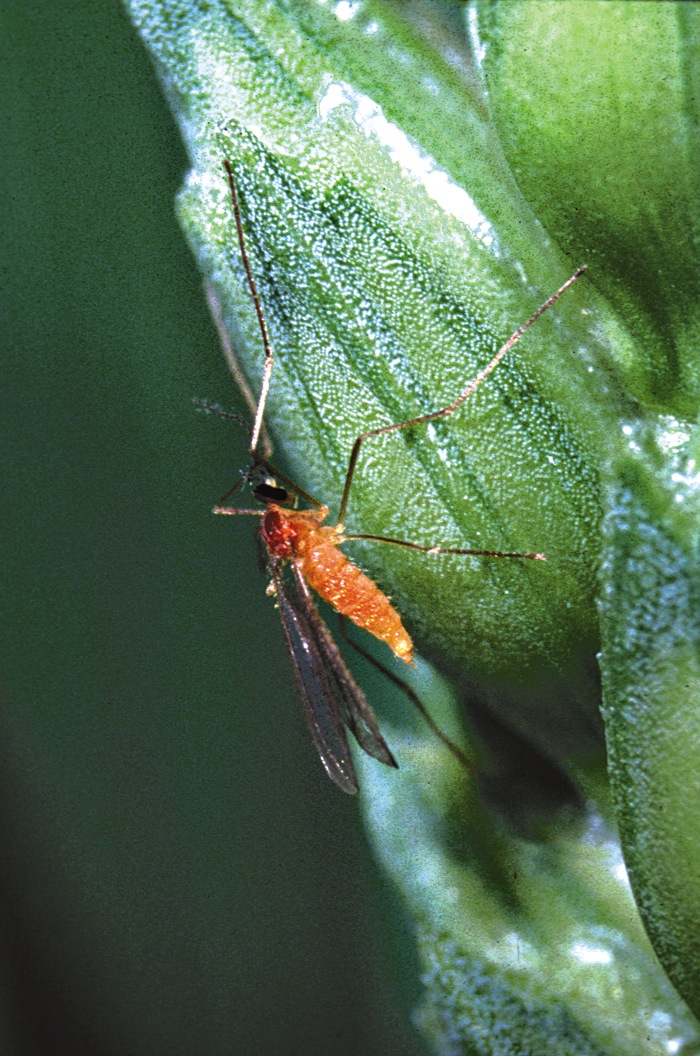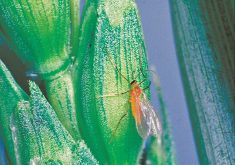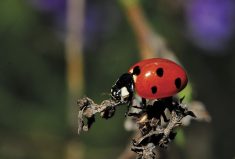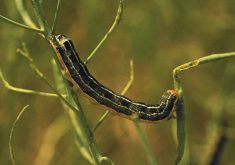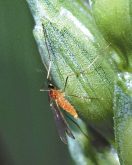Wheat midge is about half the size of a mosquito and bright orange, but is commonly confused with lauxanids, which are a little bigger and yellowish brown.
Wheat midge lays eggs in the wheat head and the larvae will then feed on the wheat kernels. One midge for every four to five wheat heads can decrease yield around 15 per cent. If there is more than one midge per eight to 10 wheat heads there is a risk of a reduced grade.
- More on the Alberta Farmer: Good bugs can save you big bucks when wheat midge arrives
The Canadian Grain Commission limits midge damage in No. 1 CWRS wheat to two per cent and eight per cent in No. 2.

